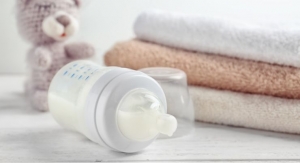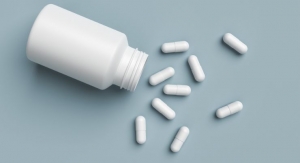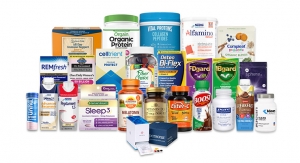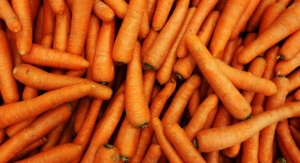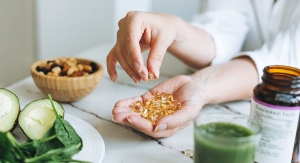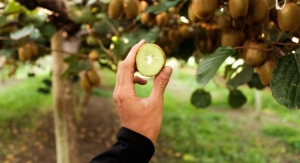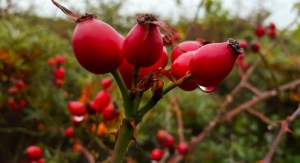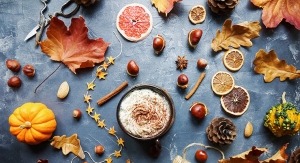Paul Altaffer & Grant Washington-Smith05.01.08
Kiwi, Acai, Acerola, Oh My!
Analyzing the back stories of three impressive superfruits.
By Paul Altaffer &
Grant Washington-Smith
There is no shortage of “superfruits” in the nutraceuticals and functional foods marketplace, with many fruits being introduced or re-introduced. Superfruit is a term that describes a new generation of fruit products that hold the promise of “super-charged” nutrition and a variety of health benefits. Marketers looking to develop products with these ingredients have focused on the health benefits and marketing potential from the recent trends favoring these fruits.
This column will analyze the stories behind three superfruits—kiwi, acai, acerola—including how they are produced, their branding potential and some of the less-known background contributing to their success.
Kiwi: The Amazing but Undervalued Fruit from ‘Down Under’
Everyone knows about kiwi or kiwifruit (Actinidia deliciosa), that brown hairy fruit with a “hard to describe” zesty taste. It has adorned supermarket shelves for years, so why would one consider the kiwifruit to be a superfruit now? In February 2006, when many of today’s superfruits were largely unknown, and cranberry and blueberry had passed the superfruit crown to Tahitian noni, the only major contender in the category at the time, professor Paul LaChance of Rutgers University was presenting some little known information to the New Zealand kiwifruit industry. Professor LaChance suggested that, “bite for bite,” kiwifruit contains more essential nutrients, making it one of the most nutrient dense fruits in the world.
It’s been 104 years since the kiwifruit arrived in New Zealand. Since then it has been developed into a commercial crop that now generates approximately $1 billion in export sales for New Zealand. Despite this, however, the commercial kiwifruit growers of New Zealand have been struggling to achieve profit from this crop. One of the major reasons is that New Zealand produces more kiwifruit than it can sell, with the majority of the annual crop being graded for export, and only a small domestic market remaining to absorb the surplus. Much of this high quality fruit is processed to pulp and sold as a relatively low value food ingredient or simply fed to cattle.
This disconnect of apparent sustainability between the “on-farm” production and the demands of the global consumer market can be explained by the culture of New Zealand’s ”producer economy,” which has sustained the country for most of the 20th century. The focus of the “producer economy” has been increasing farming productivity and extracting greater yields from every farming acre. This has been generally true whether one was farming New Zealand dairy, wool, beef, grain or kiwifruit. The New Zealand government has directly funded much of the “productivity” based research. However, during the 1990s and 2000s, New Zealand finally realized that the traditional production focus may create difficulty in terms of competing with emerging markets and therefore relegate the country to fluctuating fortunes of global commodity pricing.
While the New Zealand kiwifruit industry has benefited from producing more fruit, in the most cost efficient ways, with more environmentally sustainable methods, it has largely ignored the unique nutritional profile of this little fruit and how that might relate to creating consumer demand.
And despite revelations by nutrition experts like professor LaChance, the state of research, unfortunately, has been slow to change for the New Zealand kiwifruit industry. In a recent review of 774 research papers on kiwifruit, dating back to 1992, from a database of the New Zealand government funded research agency (tasked with supporting the New Zealand kiwifruit industry), only 28 studies (3%) could be identified that actually considered the nutritional value of kiwifruit from the consumers’ perspective. Even then, much of that research simply examined the flavor and sensory profile of the fruit.
The New Zealand kiwifruit industry has seen some interesting nutrition research from other parts of the world such as Asia and Europe. This research suggests that the oil from seed, the phenolics from the skin and seed, the oligo- and poly-saccharides from the edible part of the fruit, and even the bioactive proteins and enzymes from the kiwifruit all have outstanding health values, such as: supporting cardiovascular health and inhibiting platelet aggregation;the locking calcium into the bone matrix; and promoting skin health.
Tired of having its industry strategy led by outside research and development interests, two separate companies within the New Zealand kiwifruit industry have broken away from production-driven research to conduct their own investigation into the health benefits of this fruit, with the hope of connecting with the global consumer on these terms in the very near future.
Acai: The Power Fruit from the Amazon
It’s hard to imagine a trendier fruit these days than acai (Euterpe oleracea, aka Assai or Cabbage Palm). With its peculiar and exotic flavor, claims of antioxidant potency and energy boosting, acai has taken the market by storm. While many consumers understand the fruit comes from the Amazonian jungle of Brazil, few people understand how complex and delicate the supply chain is and how the “boom” in demand affects the lives of the many people associated with its trade.
Acai grows, mostly in the wild, in the north of Brazil, in the middle of the Amazon jungle. The people who harvest acai along the many rivers in the Amazon Basin (and survive from a variety of different means) are known as “Ribeirinhos” (river dwellers). They are at the heart of the acai business.
The acai business in Brazil was shaped several years ago by the hearts of palm industry. Back then, acai was being over-harvested as the demand for hearts of palm grew in the Amazon. Because the demand was for the young trees, few trees reached maturity to produce fruit. Fortunately this has changed. Increased demand for the fruit and improved harvesting techniques (by cutting one trunk, several will grow in its place), acai has recovered and become a good business for many.
Early enthusiasts and brand leaders like Sambazon have developed an intimate relationship with acai and the culture around it. Travis Baumgardner one of Sambazon’s founders and its director of international development, has a deep appreciation and respect for the cycle of life and trade that involves acai. According to Mr. Baumgardner, “Acai is very deeply ingrained into the diet of the forest dwellers and Ribeirinhos.” He believes that the vast majority of acai (as much as 90%) is still consumed in the north of Brazil, in the Amazon, with as much as 50% of the people consuming a liter or more of acai per day. Most of the acai trade happens on waterways (rivers and creeks), in informal markets called “Pedras” (rocks) that can be quite lively and busy.
For Sambazon, the vital interdependence among the stakeholders is one of the keys to its success. The company makes sure it involves all stakeholders into its plans, from the harvester all the way through to the customers. The business must be sustainable all the way around. Sambazon boasts the only vertically integrated acai supply chain; it promotes quality organic and sustainable practices, the creation of alternate income sources for the Ribeirinhos, as well as the recovery of native areas with trade in non-timber products.
When asked about the scalability of acai, should demand boom even further, Mr. Baumgardner replied, “The overwhelming majority of acai is still consumed locally and at this point the tree has fully recovered in the wild. We are nowhere near the sustainable capacity of acai in the wild. Acai is scalable to five or 10 times the current global demand before earnest efforts need to be made into dry land cultivation and reforestation.” Some companies invest into the further development of non-timber products in the Amazon, including the further propagation of acai in the wild.
Andre Tavares de Melo, CEO of DaFruta, a major processor of tropical fruit juices, added his perspecitves on acai. “For every direct job in acai juice processing,” he said, “there are 300 or more indirect jobs created in the complementary trade” What he means is that for every job created in a processing facility there are hundreds more created, indirectly, in harvesting, transporting, packaging and caring for acai. This highlights the importance of acai to the local economy and society. This also speaks to the complexity of the industry surrounding acai. Acai is a major food staple. Along with manioc or tapioca starch, it comprises most of the calories consumed by the natives. Acai’s dense nutrient profile and high caloric value support its role as an “energy” food.
According to Mr. Melo, DaFruta is the largest exporter of acai and cashew juices (pulp, puree and concentrates) and the second largest exporter of acerola. “DaFruta is the only Brazilian company able to supply acai year-round.” This is because they have developed a complex network of small harvesting and processing centers throughout the many territories and environments of the Amazon and western Brazil. Acai must be processed soon after it is harvested because the longer it takes to process, the greater the potential for spoilage. This means they must work with the harvesters and processors to adopt sustainable, hygienic and efficient practices.
It is hard to imagine that any product that reaches the consumption level of acai can withstand sustained levels of wild-harvesting. Yet, acai provides an excellent model for sustainable wild-harvesting programs, as well as a model for improving jungle-based economies and lifestyles.
Acerola: An Agricultural Success Story
Known as natural vitamin C, acerola (Malpighia glabra, aka Barbados Cherry) is one of the oldest and best known dietary supplements on the market. Originally native to the Caribbean, acerola has adapted to Brazil. Nutrilite (a division of Access Business Group) has long driven the acerola business, using it as a principle ingredient in many of its formulas. Recently, though, there has been a significant boom in the demand for natural sources of vitamin C—and so the demand for acerola has increased dramatically.
Whereas acai grows primarily in the wild, in the middle of the jungle, acerola is almost entirely cultivated and thrives in the arid northeast part of Brazil. It would be difficult to imagine a greater contrast. The northeast of Brazil is notoriously arid with sandy soil and scrub-like vegetation. The great benefit for fruit growers, and acerola growers in particular, is that the region receives abundant sun throughout the year and relatively little rain. This allows growers, who can irrigate, to produce fruit year-round.
Richard Charity, general manager of Nutriorganica (Fazenda Amway), is a pioneer in organic farming practices as well as acerola cultivation. Mr. Charity is one of the founders of the Biodynamic Institute (IBD) in Brazil, which is an organic certifier. He has long championed the development of organic practices in tropical agriculture. The Nutriorganica farm is a vision of the potential for organic agriculture in tropical climates. It comprises 1660 hectares (4100 acres) of organic land of which 200 hectares (nearly 500 acres) is dedicated to acerola. The farm is Bio-Dynamic, meaning it goes beyond the principles of organic farming to developing entire sustainable systems and farm management practices.
The success Nutriorganica is having, along with the boom in demand for acerola worldwide, has motivated Mr. Charity to promote organic farming throughout the region. Nutriorganica acts like an agricultural extension service, aiding small family farmers and supporting their move toward organic agriculture.
Centroflora Group, a manufacturer of botanical and fruit extracts, represents another success story. Hans Jorg Blaich and Raquel Silveira Capaz, who are team members of the Botanical and Sustainability Department at Centroflora Group, describe the concept of partnering with growers. “The goal of our department is to develop a quality and reliable supply network while promoting sustainable agricultural and harvesting practices, improving incomes and social and economic well-being, as well as providing a model for vertical integration and transparency for our customers.”
Acerola proves that subsistence farming need not be the case. It is possible for a family farm with a few hectares of land to reach comfortable income levels. Meanwhile, Ms. Capaz defines their projects in wild-harvesting as “enrichment,” meaning they prepare seedlings of the harvested species and teach the harvesters how to plant the seedlings in the wild. This provides a long-term resource that is closer to the harvester’s home as well as aid in the cause of reforestation. All these programs provide financial and social benefits to all involved.
These two companies as well as DaFruta provide great examples of the benefits of working with and promoting small family farmers. A family with three to five hectares (7.5 to 13 acres) planted in acerola can make a comfortable living. This is a long stretch from the subsistence farmer that wasn’t able to survive off their farm and needed to find employment in other activities.
The average yields for acerola in the Brazilian northeast are 40 or more tons per hectare compared to 25 tons in other regions of Brazil and the world. This is partly due to the environment and climate of the northeast, but is also associated with the benefits of organic farming. A single tree is capable of producing an average of 40 kg of fruit per year and as much as 90 kg. Organic farming provides lower costs and more sustainable production (with fewer pest/illness problems), while improving yields. This is not an isolated experience.
And while yields are higher, organic producers also receive a 30-40% premium on their fruit. It is said that average returns are between 25-40%, which for farming, especially in the impoverished northeast of Brazil, is definitely significant. Years ago, when people like Mr. Charity and Mr. Blaich tried to persuade small farmers to produce crops like acerola organically, they were treated as foreigners to be mistrusted. Now, communities look forward to partnering with them.
Should the demand for acerola continue to grow, there will continue to be growth in family as well as organic farming. With all signs pointing toward sustained growth, juicing companies like DaFruta are having a difficult time keeping up with the global demand. NW


